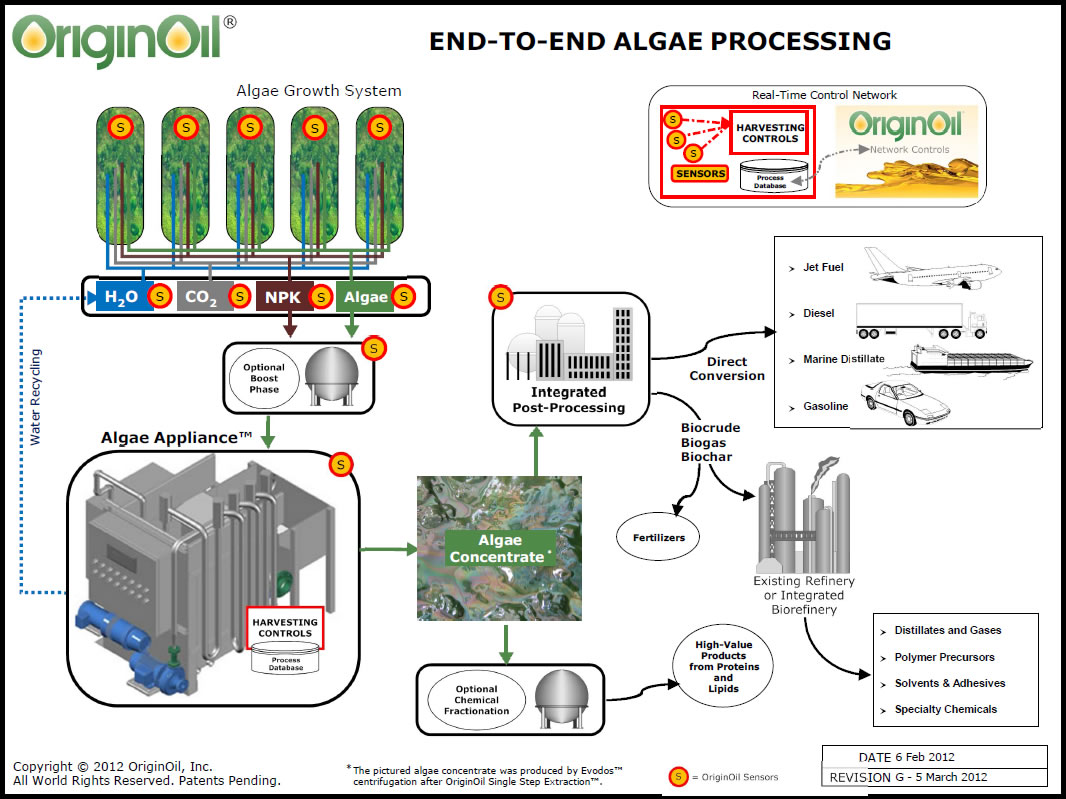Flushing toilets could heat future buildings


Imagine how much wastewater is flushed down the pipes in large building projects every day. Green tech entrepreneurs at OriginOil have created a system that instead repurposes it to generate heat for tenants and treat the water.
OriginOil, a start-up based in Los Angeles, CA., has begun a pilot of its urban algae farm concept at the La Défense complex near Paris. Wastewater from buildings nourishes algae growth; algae is processed to make heat. The company is attempting to prove that integrating algae production into large building complexes will help bring them closer to net zero.
The French government has mandated that new commercial buildings must produce more clean energy than they consume and purify or recycle water. Origin Algae views these conditions as laying favorable ground for its technologies to be broadly adopted.
Government action is less aggressive in the United States, but a report by the New Buildings Institute (NBI) and the Zero Energy Commercial Building Consortium (CBC) recently found that net zero buildings are on the rise across the U.S. with nearly 100 in existence today.
Riggs Eckelberry, OriginOil's CEO, said that its flat panel PBRs (photobioreactors) are suitable for vertical surfaces, and that tall buildings, such as high rise apartment complexes, are a prime target. Large area rooftops are another possibility.
"The fact that our PBRs can fit the sides of buildings as well as the roofs makes them compete with solar cells, for example. Solar is fine for energy but will never purify water, for example," Eckelberry said.
OriginOil expects the systems to: become competitive from 4000 m2 of exposed PBR area onwards. Some of its active projects are located on top of 50,000 m2 rooftops, Eckelberry noted. "A 4000 m2 algae farm installed on a 10,000 floor area building would generate 40 kWh per m2 of floor surface per year."
"The power / heat ratio in harvested energy is between 1/4 and 2/3. In other words, for every unit of power you get, you also get up to four units of heat. Large apartment complexes can indeed be heated this way," Eckelberry explained.
A fringe benefit to algae is that it can absorb CO2 and pharmaceutical chemicals found in wastewater that cannot be treated by conventional sewage treatment plants. Toilet algae might sound far-fetched, but as society grows, buildings and cities will have have a far greater focus on sustainability.
Related on SmartPlanet:
- Start-up transforms carbon into gasoline
- Turning pollution into energy
- Shell spends 19 billion to convert natural gas into clean diesel
- U.S. invests $510 million into biofuels
- Ford backs algae biofuel research
- Your next flight could be plant powered
- Virgin introduces a lower carbon jet fuel
- New from the Jersey Shore: high octane biofuel
This post was originally published on Smartplanet.com